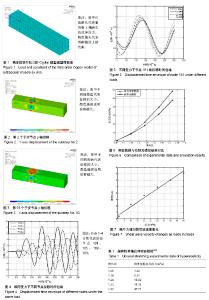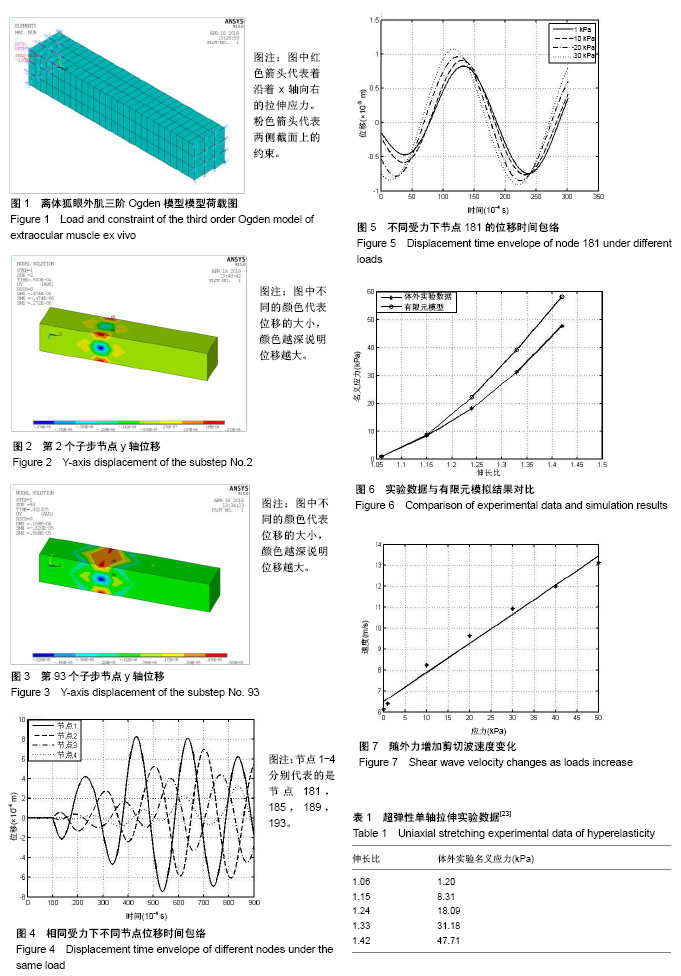| [1] Zivkovic MZ, Djuric S, Cuk I, et al. A simple method for assessment of muscle force, velocity, and power producing capacities from functional movement tasks. J Sports Sci. 2017;35(13):1287-1293.[2] Bogey RA, Barnes LA. An EMG-to-Force Processing approach for estimating in vivo hip muscle forces in normal human walking. IEEE Trans Neural Syst Rehabil Eng. 2016. doi: 10.1109/TNSRE.2016.2613021. [3] Gennisson JL, Cornu C, Catheline S, et al. Human muscle hardness assessment during incremental isometric contraction using transient elastography. J Biomech. 2005; 38(7):1543-1550. [4] Le Sant G, Ates F, Brasseur JL, et al. Elastography Study of Hamstring Behaviors during Passive Stretching. PLoS One. 2015;10(9):e0139272.[5] 温朝阳,范春芝,袭九春,等.实时定量超声弹性成像技术检测肱二头肌松弛和紧张状态下弹性模量值差异[J].中华医学超声杂志(电子版),2011,8(1):61-63.[6] Sandrin L, Fourquet B, Hasquenoph JM, et al. Transient elastography: a new noninvasive method for assessment of hepatic fibrosis. Ultrasound Med Biol. 2003;29(12):1705-1713. [7] Sandrin L, Tanter M, Gennisson JL, et al. Shear elasticity probe for soft tissues with 1-D transient elastography. IEEE Trans Ultrason Ferroelectr Freq Control. 2002;49(4):436-446.[8] van Katwyk S, Coyle D, Cooper C, et al. Transient elastography for the diagnosis of liver fibrosis: a systematic review of economic evaluations. Liver Int. 2017;37(6): 851-861. [9] Nightingale K, Soo MS, Nightingale R, et al. Acoustic radiation force impulse imaging: in vivo demonstration of clinical feasibility. Ultrasound Med Biol. 2002;28(2):227-235.[10] Nightingale K. Acoustic Radiation Force Impulse (ARFI) Imaging: a Review. Curr Med Imaging Rev. 2011;7(4): 328-339.[11] Wang L. Applications of acoustic radiation force impulse quantification in chronic kidney disease: a review. Ultrasonography. 2016;35(4):302-308.[12] Thiele M, Detlefsen S, Sevelsted Møller L, et al. Transient and 2-Dimensional Shear-Wave Elastography Provide Comparable Assessment of Alcoholic Liver Fibrosis and Cirrhosis. Gastroenterology. 2016;150(1):123-133. [13] 宋佳,周琦,姜珏,等.弥漫型桥本甲状腺炎实时二维定量剪切波弹性成像杨氏模量值研究[J].中华实用诊断与治疗杂志, 2017, 31(1):65-67.[14] Lam AC, Pang SW, Ahuja AT, et al. The influence of precompression on elasticity of thyroid nodules estimated by ultrasound shear wave elastography. Eur Radiol. 2016;26(8): 2845-2852. [15] 支欣,钱林学,耿慧英,等.剪切波弹性成像技术临床应用进展[J].中国医学装备,2016,13(12):66-70.[16] 杨克己,温家华.基于最大似然互相关时延估计的超声辐射力弹性成像技术研究[J].机械工程学报,2011,47(8):28-34.[17] 罗建文,白净.超声弹性成像仿真的有限元分析[J].北京生物医学工程,2003,22(2):99-103.[18] Gennisson JL, Deffieux T, Macé E, et al. Viscoelastic and anisotropic mechanical properties of in vivo muscle tissue assessed by supersonic shear imaging. Ultrasound Med Biol. 2010;36(5):789-801. [19] Zhao H, Song P, Urban MW, et al. Bias observed in time-of-flight shear wave speed measurements using radiation force of a focused ultrasound beam. Ultrasound Med Biol. 2011;37(11):1884-1892. [20] Eby SF, Cloud BA, Brandenburg JE, et al. Shear wave elastography of passive skeletal muscle stiffness: influences of sex and age throughout adulthood. Clin Biomech (Bristol, Avon). 2015;30(1):22-27. [21] Chino K, Kawakami Y, Takahashi H. Tissue elasticity of in vivo skeletal muscles measured in the transverse and longitudinal planes using shear wave elastography. Clin Physiol Funct Imaging. 2017;37(4):394-399. [22] 朱超超.超声剪切波弹性成像在定量评估骨骼肌硬度中的应用研究[D].深圳:深圳大学,2017.[23] 郭红梅,高志鹏,陈维毅.离体狐眼外肌被动行为的超弹性分析[J].医用生物力学,2017,32(1):27-31.[24] 殷有泉.固体力学非线性有限元引论[M].北京:北京大学出版社,1987.[25] Ophir J, Céspedes I, Ponnekanti H, et al. Elastography: a quantitative method for imaging the elasticity of biological tissues. Ultrason Imaging. 1991;13(2):111-134.[26] Valenta L, Molnár L. Vergleich des neo-hooke´schen und des mooney-rivlin´schen materialmodells in der fem-berechnung. Mech Eng. 2001;45(1):95-101.[27] Mooney M. A Theory of Large Elastic Deformation. J Appl Phys. 1940;11(9):582-592.[28] Tschoegl NW. Constitutive equations for elastomers. J Polym Sci A1. 1971;9(7):1959-1970. [29] Yeoh OH. Some Forms of the Strain Energy Function for Rubber. Rubber Chem Technol. 2012;66(5):754-771.[30] Ogden RW. Large Deformation Isotropic Elasticity - On the Correlation of Theory and Experiment for Incompressible Rubberlike Solids. Proc R Soc Lond. 1972;326(1567): 565-584.[31] Ogden RW. Nearly isochoric elastic deformations: Application to rubberlike solids. J Mech Phys Solids. 1978;26(1):37-57. [32] Ogden RW, Roxburgh DG. A pseudo-elastic model for the Mullins effect in filled rubber. Proc R Soc A. 1999;455(1988): 2861.[33] Ansys Inc. ANSYS Dynamic Analysis. Ansys Inc., 2000.[34] 杨书燕.特殊地形上结构非线性地震反应的研究[D].天津:天津大学,2006.[35] Quaia C, Ying HS, Nichols AM, et al. The viscoelastic properties of passive eye muscle in primates. I: static forces and step responses. PLoS One. 2009;4(4):e4850.[36] 李英伟,孔令富,刘兴斌,等.基于互相关理论的油井流量测量系统[J].电子器件,2007,30(4):1458-1461.[37] Yeh CL, Kuo PL, Gennisson JL, et al. Shear Wave Measurements for Evaluation of Tendon Diseases. IEEE Trans Ultrason Ferroelectr Freq Control. 2016;63(11): 1906-1921.[38] Lindle RS, Metter EJ, Lynch NA, et al. Age and gender comparisons of muscle strength in 654 women and men aged 20-93 yr. J Appl Physiol (1985). 1997;83(5):1581-1587.[39] 余群,翁锡全,王丽平.骨骼肌减少症与运动训练对肌卫星细胞影响的研究现状及展望[J].中国组织工程研究, 2016,20(15): 2248-2254.Bouzidi S, Bechir H, Brémand F. Phenomenological isotropic visco-hyperelasticity: a differential model based on fractional derivatives. J Eng Math. 2016;99(1):1-28. |



